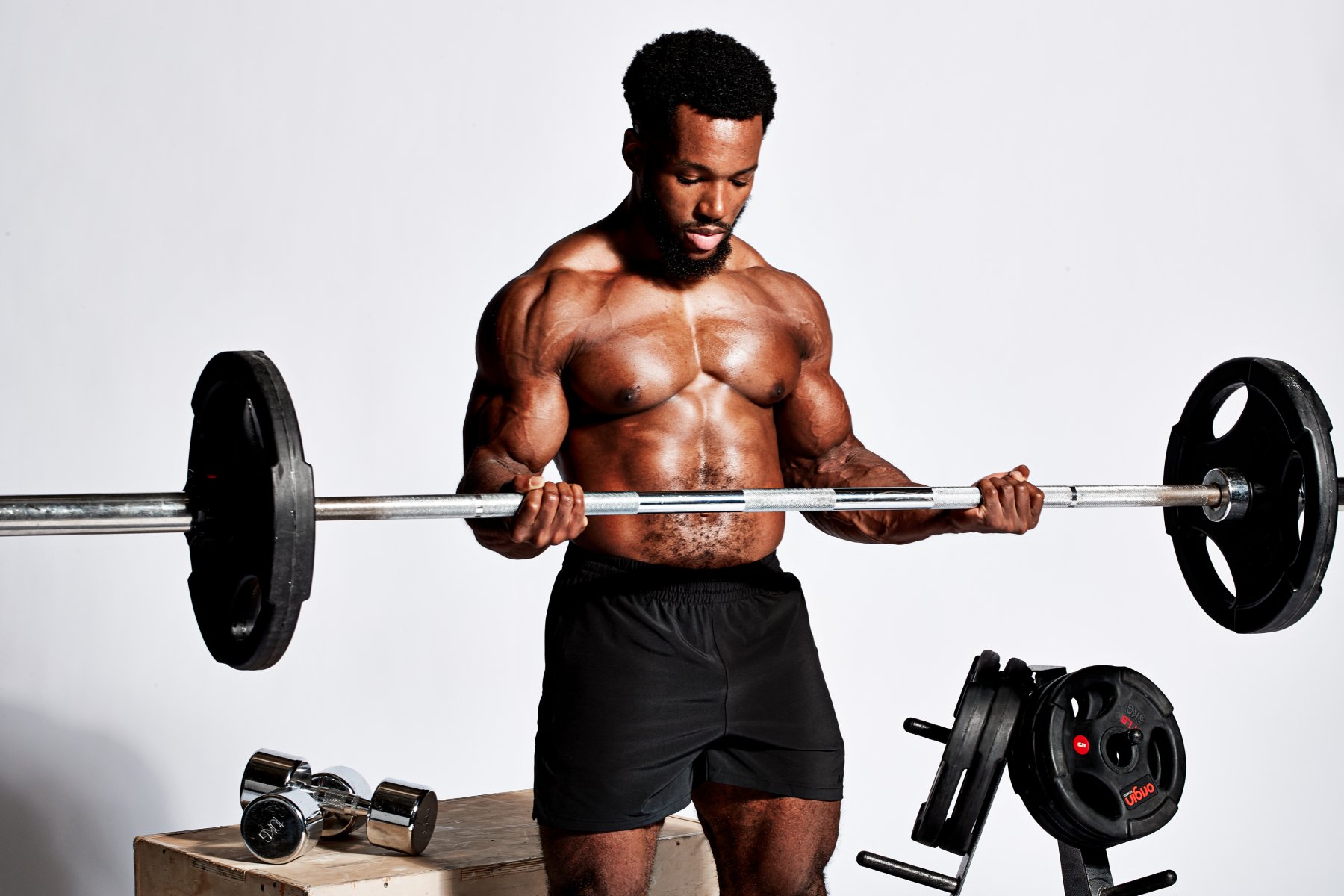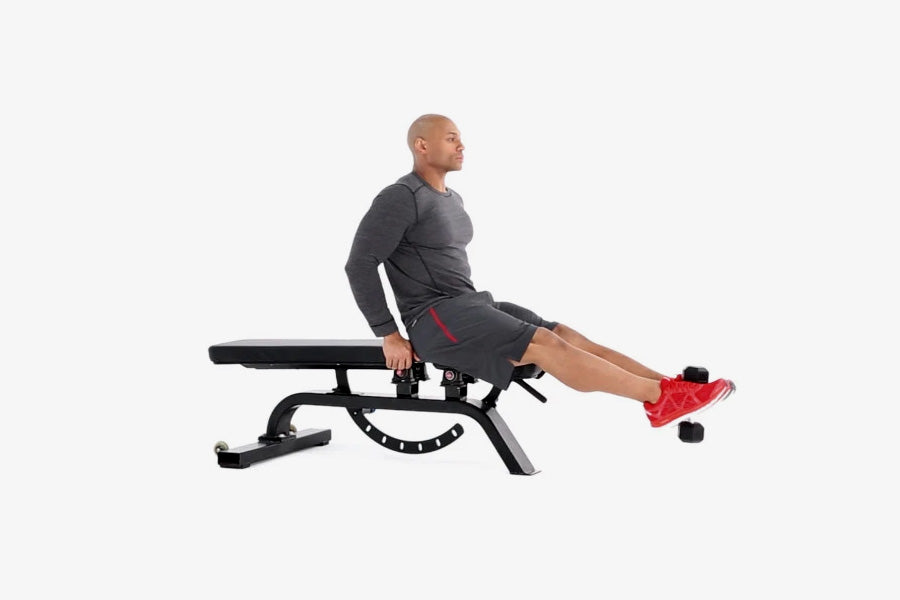The toe bone links to the foot bone, which then attaches to the heel bone. James Weldon Johnson's delightful song "Dem Dry Bones" helped us comprehend the kinetic chain as children. The song accurately describes the fundamentals of the kinetic chain workout, which includes both open and closed Kinetic Chain Exercises. Certified personal trainer Hannah Shine recommends introducing kinetic chain movements into workouts to boost strength, enhance balance and coordination, and lower the chance of injury.
Depending on how into working out you are, you may or may not be familiar with kinetic chain workouts. However, if you want to raise your gym game and amaze everyone around you, try using the kinetic chain. Here's a summary of these exercises and how to incorporate them into your next sweat session. Let the scrolling begin!
What Is Kinetic Chain Exercise
Kinetic chain exercises are motions that use the mechanical engineering idea of kinetics.The kinetic chain theory claims that our body's joints and segments are inextricably linked.The movement of one of them initiates a chain reaction that affects all nearby joints and segments that are related to it. During kinetic chain activities, your body's distal parts either remain stationary or move freely in space. To further comprehend the kinetic chain, observe how your body moves when doing wall throws.
- To begin the workout, place your feet firmly on the ground, tense your core, and gently bend your arms.
- This helps your legs, belly, and arms produce force to initiate the throwing action.
- Finally, your arms move to release the ball.
All these steps occur as a chain reaction helping the exercise target the upper body muscles. It makes the moment a perfect open kinetic chain exercise.
Recommended to read:
Types Of Kinetic Chain Exercises
Kinetic chain exercises may be "closed" or "open," depending on the position of the body parts farthest from the center.These distal portions, such as your hands and feet, may be fixed or move freely.
Closed-Chain Exercises
Closed kinetic chain workouts are those in which the distal points of a limb are fixed. In these exercises, the distal sections may be on the floor or tethered to a stationary object such as a Plyo box or a bar.Push-ups are an excellent illustration of this kind of kinetic workout. When doing them, you attach your hands and feet to the ground while moving the rest of your body. A pull-up is a closed-chain exercise since the hands are fixed to the bar.
These workouts may or may not need gym equipment or weights. A 2021 YouGov survey found that bodyweight exercise, such as push-ups, is the most popular type of personal workout in the US (15%) and UK (11%), while weighted bodyweight exercises are preferred by 13% and 9%, respectively.
Another feature of these workouts is that they all include complex motions that target numerous muscles and joints. As a result, they give a more robust metabolic response due to increased energy consumption. As a result, these activities are most effective for those looking to modify their body composition.
Open-Chain Exercises
Open kinetic chain workouts include allowing the distal tip of a particular limb to move freely in space.For example, when you do overhead tricep extensions, your hands do not rest on the ground or remain stationary. Instead, they move the dumbbell up and down. Bench press and bicep curls are other exercises that use the open kinetic chain.
Unlike closed-chain exercises, these routines do not include complex motions. Instead, they focus on a particular joint and only stimulate the muscles connected with that body part throughout the action. Open-chain workouts allow you to isolate and strengthen certain body parts. These workouts are ideal for bodybuilders and patients receiving physiotherapy.
We now know there are two types of kinetic chain exercises. How different are the open and closed kinetic chain exercises? Let us have a look.
Read also:
Major Benefits Of Kinetic Chain Exercises
- May Improve Joint Stability
According to one research, both kinetic chain workouts are beneficial for those who have injured their anterior cruciate ligament (which stabilizes the knee joint). Closed-chain motions, which have fixed distal endpoints, emphasize joint compression and stabilize joints. Furthermore, open-chain workouts distribute the strain across surrounding muscles. Many physical therapists utilize open and closed-chain exercises in kinetic chain physical therapy.
- May Improve Functional Fitness
Incorporating kinetic chain movements into your workout program will significantly improve your functional fitness. Closed-chain workouts help improve the dynamic balance required for displacing oneself. Our regular activities include both closed and open kinetic chain actions. Whether you're crouching down to get something up, putting a container on the top shelf of your cupboard, or going up the stairs, there's movement everywhere. This is why it is critical to practice on the daily skills that will improve your life.
- May Improve Muscle Strength
Functional fitness and muscular strength go hand in hand. Both open and closed chain movements improve muscular strength Furthermore, open-chain workouts after anterior cruciate ligament restoration may play an important role in knee function (5). They target certain muscles to do specific actions. This manner, they can assist you keep your activities on track. However, open-chain motions alone do not provide enough joint stability. To improve kinetic chain mobility, joint and muscle health, and general fitness, include a balanced mix of open and closed-chain moments throughout your training.
5 Best Open And Closed Kinetic Chain Exercises
1. Bench Press

Bench press mainly targets the pectoralis major, which is the largest muscle of the anterior chest wall. This open-chain kinetic exercise also works the triceps and shoulder muscles.
Equipment Needed
How To Do
- Lie on the bench with your eyes roughly aligned with the front of the rack that holds the bar.
- Keep your feet wide and flat on the floor, ensuring your spine is not arched or rounded.
- Draw your shoulders behind you and firmly grab the barbell with your hands. Your thumb should be outside of your closed fist.
- Keep your upper arms at an angle of 45 degrees to the body and ensure they are slightly more than shoulder-width apart.
- Lock your elbows and remove the barbell from the rack.
2. Bicep Curls

Bicep curls target biceps brachii, brachialis, and brachioradialis, the muscles at the front of your arms. This open-chain kinetic exercise is perfect for building more arm strength.
Equipment Needed
How To Do
- Stand with your feet firmly on the floor and about hip-width apart.
- With your core engaged, hold one dumbbell in each hand. Keep your arms relaxed at the sides of your body and your palms facing forward.
- Relax your shoulders, inhale, and bend the elbow to lift the weights. Keep your upper arms stable while doing so and as the dumbbell approaches your shoulders.
- Exhale and smoothly lower the dumbbells to the starting position.
- Perform 2-3 sets of 8-12 repetitions with a weight you can control.
3. Seated Leg Extensions

Seated leg extensions are open-chain quad exercises. It means they work the front thigh muscles. Along with this, these also work as open-chain knee exercises by strengthening the knee ligaments.
Equipment Needed
How To Do
- Sit on the lever machine, so the pad is at the top of your ankle region. Choose a moderate weight. You can also perform this kinetic movement on a chair without weights.
- Keep your knees at an angle of 90 degrees and hold the handlebars.
- Inhale and lift the weight until your legs are completely straight. Do not arch your back or lock your knees at any point in the movement.
- Exhale and lower your legs back to the starting position.
- Do 3 sets of 8-12 reps each.
4. Chest Fly
The chest fly exercise mainly targets the pectoral muscles of the chest. They also have an impact on the arms and shoulders.
Equipment Needed
How To Doa
- Lay on an incline bench lowered to 30 degrees with your back flat.
- Hold a dumbbell in each hand and bend your elbow. This is your starting position.
- Then, bring your arms to the chest level, ensuring your elbows are bent and pointing outwards.
- Exhale and lift your arms above your chest, keeping your form intact.
- Inhale and smoothly lower your arms to the starting position.
5. Hamstring Curls
Hamstring curls specifically target the back of the leg. It includes the hamstrings and calf muscles.
Equipment Needed
How To Do
- Lie with your back flat on the leg curl bench.
- Stretch your legs, so the roller pads lay just above your heels.
- Hold the support handles on both sides. This is your starting position.
- Exhale and pull your ankles close to your buttocks by flexing your knees.
- Hold briefly, Inhale, and slowly return to the starting position.